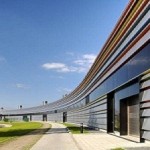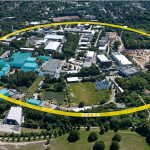Particle Research: Where Software Defined and Big Data Collide …

Dr. Volker Gülzow, head of IT, Deutsches Elektronen-Synchrotron
By Dr. Volker Gülzow
When it comes to data volumes, there’s Big Data, and then there’s Huge Data.
This is our reality at Deutsches Elektronen-Synchrotron (DESY), a leading national research center in Germany. We’ve been storing, processing and managing massive amounts of data before the term Big Data was even coined.
PETRA III, the most brilliant X-Ray source in the world.
Founded in 1959, DESY is one of the world’s leading particle accelerator centers and a member of the Helmholtz Association. We develop, build and operate large particle accelerators which are used to investigate the structure of matter. DESY is housed in Hamburg and Zeuthen in Germany and is home to 3,000 scientists a year, who come from more than 40 countries.
DESY’s 1.7 mile-long PETRA III accelerator will soon be capturing and processing more than 20GB of data per second. PETRA III is an extremely bright X-ray source that captures images of the tiniest building blocks of matter for a variety of research projects ranging from semiconductor designs to cancer therapies.
PETRA III can analyze crystals even smaller than one micrometer across and is being used to analyze miniscule particles like delicate biomolecules. Cameras in PETRA III take high-speed snapshots, for instance of rotating samples from all sides and record the measurements.
Deutsches Elektronen-Synchrotron’s PETRA III accelerator in Hamburg, Germany
This creates massive data management challenges for DESY and its hundreds of scientists who demand quick access to the huge volumes of images and videos. Along with IBM research and supported by IBM software defined storage technologies, DESY is able to expand its research capabilities and also provide analysis-as-a-service via the cloud.
Such a scalable storage infrastructure is critical to DESY’s growth roadmap, especially since a number of international partners are currently building the X-Ray laser European XFEL. This research light source is expected to generate even more data. In fact, DESY expects to receive about 100 Petabytes per year from the European XFEL – that’s comparable to the amount of data produced annually by the world’s largest particle accelerator, the Large Hadron Collider (LHC) at the research center CERN in Geneva.
To be sure, the future success of the scientific community is closely tethered to infrastructure. Research can lead to improved insight into matter with the potential to enable the development of new medicines and new materials. But to make all this happen data management and analysis capabilities have to match up with advancements in science. Technologies that provide scalability, speed and agility will be key to DESY scientists’ ability to make breakthroughs.
Continue reading here –
Particle Research: Where Software Defined and Big Data Collide …



